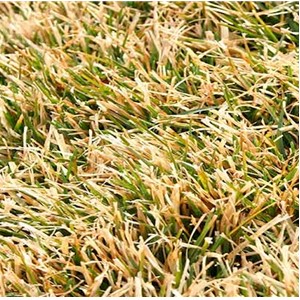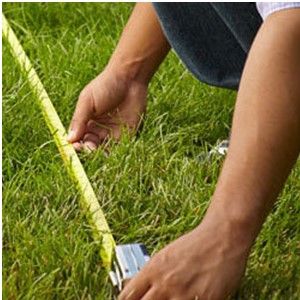After Freeze Spring Turf Care
Stephen Brueggerhoff, CEA – Horticulture; Texas A&M AgriLife Extension Service
3/28/2021
Winter Storm Uri inflicted widespread damage to our communities this past month, and some of our neighbors may still be recovering from the event. The freezing temperatures certainly impacted our landscapes, with each plant showing varying damage symptoms such as discoloration, vegetation softening and woody stems becoming brittle and prompting our desire to prune the problems away.
I have asked neighbors to have patience and monitor their plants for any signs of new growth prior to hard pruning. Pruning damaged tissue into living tissue exposes plants to potential diseases. It is tempting to remove damaged tissue, and not pruning allows vegetation to grow and provide a visual guide where to prune. Fortunately, most of our landscape plants are quite resilient and I have seen dramatic regrowth from quite a bit of my landscape plants, from wispy thread-like suckers along the trunk of grapefruit variety Cocktail, small spoon-shaped leaves emerging at the base of blue plumbago, brown and mushy banana trees spearing the air with rolled leaves, and petunias expressing growth at their base.
 Turfgrass appeared to have been severely affected as well. It was easy to forget that St. Augustinegrass is dormant and will appear brown during an average winter season, with longer daylength and warmer spring temperatures now promoting active growth. You may see a few spring broad leaf weeds growing, and the best course of action is to hand-pull, mow or directly apply post-emergent herbicides as appropriate. Discontinue pre-emergent herbicide application this season. Pre-emergent herbicides suppress root development and will provide the same action to grasses that are currently in recovery post freeze. You may experience a few more summer weeds, and best to focus on the health of your turfgrass that is actively growing roots and shoots. As a general recommendation, discontinue use of ‘weed and feed’ products. These products are combination of fertilizer and pre-emergent herbicides, and each chemical should be applied independently and at different times of the year. Aggie Turf offers a fact sheet on pre-emergent herbicides for the home lawn online at https://aggieturf.tamu.edu/publications/, with seasonal application information and the kinds of products that will work best for your lawn.
Turfgrass appeared to have been severely affected as well. It was easy to forget that St. Augustinegrass is dormant and will appear brown during an average winter season, with longer daylength and warmer spring temperatures now promoting active growth. You may see a few spring broad leaf weeds growing, and the best course of action is to hand-pull, mow or directly apply post-emergent herbicides as appropriate. Discontinue pre-emergent herbicide application this season. Pre-emergent herbicides suppress root development and will provide the same action to grasses that are currently in recovery post freeze. You may experience a few more summer weeds, and best to focus on the health of your turfgrass that is actively growing roots and shoots. As a general recommendation, discontinue use of ‘weed and feed’ products. These products are combination of fertilizer and pre-emergent herbicides, and each chemical should be applied independently and at different times of the year. Aggie Turf offers a fact sheet on pre-emergent herbicides for the home lawn online at https://aggieturf.tamu.edu/publications/, with seasonal application information and the kinds of products that will work best for your lawn.
Regarding annual maintenance, the first or second week in April is an appropriate time of year to begin annual lawn fertilization. Apply a product with a 3-1-2 nutrient ratio unless results from a soil test indicate differently. Rates of fertilization are ½ to 1 pound of nitrogen per 1,000 square foot of lawn.  Note that it is very important to measure your lawn area to apply the correct amount of fertilizer, and the simplest way to measure the correct amount is to take the first number of the product and divide it into 100. Example: fertilizer with ratio 15-5-10, divide 100 by 15, resulting with 6.5 pounds you would apply evenly over the calculated area. If you are adding a thin layer of compost once a year and continuing to leave grass clippings, you are already adding nutrients to your lawn. In general and annually, consider fertilizing once in spring, April through late May, then once more in early fall, late September through November. Lawns generally do not require as much irrigation during winter months and adjust your watering schedule based on seasonal rain events. Resume mowing at the appropriate height of 3 to 4-inches for St. Augustinegrass, and always allow the grass time to recover between mowing.
Note that it is very important to measure your lawn area to apply the correct amount of fertilizer, and the simplest way to measure the correct amount is to take the first number of the product and divide it into 100. Example: fertilizer with ratio 15-5-10, divide 100 by 15, resulting with 6.5 pounds you would apply evenly over the calculated area. If you are adding a thin layer of compost once a year and continuing to leave grass clippings, you are already adding nutrients to your lawn. In general and annually, consider fertilizing once in spring, April through late May, then once more in early fall, late September through November. Lawns generally do not require as much irrigation during winter months and adjust your watering schedule based on seasonal rain events. Resume mowing at the appropriate height of 3 to 4-inches for St. Augustinegrass, and always allow the grass time to recover between mowing.
Understanding and implementing these few steps will help to keep your lawn healthy. One common phrase from Aggie Horticulture is “learn to love ugly”. Your patience awaiting signs of recovery and new growth will pay off in the long run. Brazoria County AgriLife Horticulture offers a diversity of timely gardening topics this spring, from butterfly gardening, companion planting, as well as xeriscape gardening and lawn care, we strive to help improve your gardening practices. Learn more from our website, https://brazoria.agrilife.org, and I look forward to seeing you in the garden.
